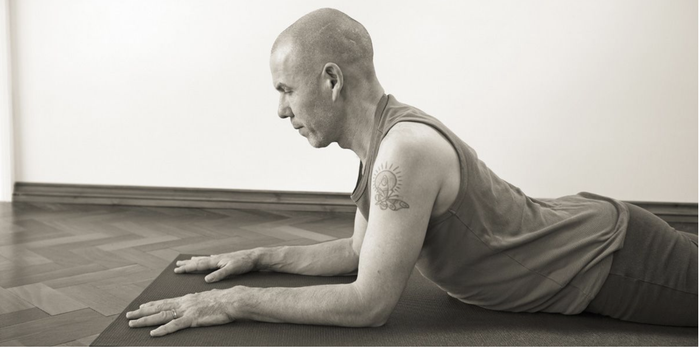Digestive Health and yoga
It will come as no surprise to those suffering from digestive disorders, how quickly stress affects our digestive health. Our whole digestive system is part of our emotional, mental, and physical landscapes; in a very real sense. Within the central tube that makes up the gastro-intestinal tract (gut), we find different layers (koshas) meeting in terms of how we experience our lives. We tune into our gut feelings and if we’re wise, we trust our gut. In Yoga, digestion refers to all of life’s experiences, not just food.
Listening to our gut feelings
We experience gut feelings or ‘butterflies in the stomach’ when life becomes difficult or we feel unsafe or rattled. These are very real. Recent neuroscientific research shows that our instinctive feelings are registered by the enteric nervous system within our guts (our ‘Second Brain’). These are subsequently laid down as impressions in our central nervous system.
This means that we listen to gut feelings as guides through life; we learn and remember places, scenarios, people that we designate as not safe so that we can quickly respond in survival and protective modes. These ‘somatic markers’ (as they are referred to in neuroscience) can be equated to the mind and body conditionings described as samskaras (mind habits) within the yoga system.

Listen with discernment
This is not to say that all of these gut feelings are simply right; we lay down many of our conditionings in early life as survival strategies. We may be responding to sights, smells, sounds that trigger reactions from old events or circumstances that may no longer be valid in the here and now.
Many gut feelings should be listened to. We might be overdoing it or making decisions for reasons that are not true to our fundamental beliefs. When we go through life tensing our jaw to steel ourselves against those niggling doubts, we are often dampening down deeper more intuitive and instinctive feelings. These might tell us that we may need rest, change or to state our needs clearly. When we think rather than feel our way through life, we are shutting ourselves off from those feelings from down below.
Emotions through the psoas muscle
Our viscera, our guts, nestle in to our deeper abdomen into the cradle of our psoas, the muscle that holds us up and links bottom and top body. You can feel this in the soft tissues just to the inside of the hip bone. The psoas muscle, known as our ’emotional muscle’ tightens and clenches when we experience stress or trauma. We pull our legs up into our body into the protective foetal response. Curling inwards helps us protect our belly, heart, and throat.
Tightness in the psoas is commonly linked to lower back issues. Tension pulls on the sacroiliac joint, where the lumbar spine fits into the pelvis. When we hold continual tension in the body through chronic stress or trauma, the psoas can remain tight and we might feel this in difficulty moving in the hips or anywhere else throughout the body, throughout the web of connective tissue, the fascia. This tightening ripples back through the digestive tract that the world must not be a safe place resulting in a vicious cycle. We relay back tension to the central nervous system to hold us in protective survival modes.
Tension equals disrupted gut function
The digestive system works in parasympathetic mode of the nervous system – the calm soothing tone or ‘rest and digest’. Any tension we continually hold interrupts and interferes with our digestive process. The smooth function and regulation of breakdown of food, absorption of nutrients and healthy bowel movements is disrupted. This affect how we take in nutrition and how we eliminate things that we don’t need. Incomplete digestion can mean food hangs around in the gut undigested. This can result in changes to the beneficial gut bacteria, in excess gas, discomfort, pain and poor gut motility.
Finding the middle path
Irritable bowel syndrome or IBS is related to nervous system changes in the gut. This can manifest as tendencies to constipation and diarrhea (or alternating between the two) as it struggles to find normal in the middle; lurching between holding on and letting go. When we feel calm, relaxed open and expansive, our nervous system can more easily find the middle way.
The inflammation connection
Stress and trauma also create inflammation. This is an important survival response to stop us bleeding to death following injury. The often low level, but chronic and relentless stress, that is part of the modern world can keep us in a state of inflammation at the gut wall. This can contribute to pain or digestive issues or be part of the picture for more pronounced inflammatory bowel disorder (IBD) such as ulcerative colitis or Crohn’s disease.
Inflammation can also interfere with gut healing which leaves us prone to intolerances and allergies. This happens when partially digested particles of food move straight through the gut wall into the bloodstream.
Charlotte Watts is a Senior Yoga Teacher with a love of explorative, compassionate and somatic yoga practices. Her influences include Qi Gong and Feldenkrais. Charlotte is the author of Yoga Therapy for Digestive Health (Singing Dragon 2018). She is also an award-winning nutritionist. Charlotte has practiced since 2000 and specialises in stress-related and fatigue conditions and burnout, and digestive issues. Charlotte teaches modules for Teaching Yoga for Stress and Burnout; for CFS/ME and for Digestive Health for Yogacampus and on the Yogacampus Yoga Therapy course.




